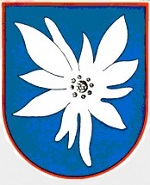Corgi AA36712 German Junkers Ju 88A-5 Medium-Bomber - 9K+ED, Stab III./Kampfgeschwader 51 "Edelweiss", Etampes-Mondesir, France, Winter 1940 (1:72 Scale)
"Guns before butter. Guns will make us powerful; butter will only make us fat."
- Reichsmarschall Hermann Goering, Head of the German Luftwaffe
 The Luftwaffe's Junkers Ju 88 was a twin-engine, multi-role aircraft. Among the most versatile planes of the war, it was used as a bomber, close-support aircraft, nightfighter, torpedo bomber and reconnaissance aircraft. A solid aircraft with great performance, it went on to be one of the Luftwaffe's most versatile aircraft. It carried out almost every kind of mission ever imagined, even as a giant flying bomb. It was used in every theater, with many nations, including nations allied against Germany.
The Luftwaffe's Junkers Ju 88 was a twin-engine, multi-role aircraft. Among the most versatile planes of the war, it was used as a bomber, close-support aircraft, nightfighter, torpedo bomber and reconnaissance aircraft. A solid aircraft with great performance, it went on to be one of the Luftwaffe's most versatile aircraft. It carried out almost every kind of mission ever imagined, even as a giant flying bomb. It was used in every theater, with many nations, including nations allied against Germany.
The aircraft's first flight was made by Prototype Ju 88V-1, which bore the civil registration D-AQEN, on December 21st, 1936. When it first flew, it managed about 580 km/h (360 mph) and Hermann Goring was ecstatic. Finally it was something that could positively fulfill the promise of the Schnellbomber, a bomber so fast fighters could not catch it.
Unfortunately, by the time everyone had had their wish list added (including dive-bombing), the speed had dropped to around 450 km/h (280 mph). The draggy fuselage was modeled after its predecessor, the Dornier Do 17, but with fewer defensive guns because the belief still held that it could out-run fighters. It was also very, very late. Planned for 1938, it finally entered service the day the Germans invaded Poland, and then with only 12 aircraft. Production was painfully slow, and problems with such an advanced machine kept cropping up. The Ju 88C series of heavy fighter was also created very early in 1940, but kept secret from Goring because he only wanted bombers.
The Ju 88A-1 series first flew anti-shipping sorties close to Norway. Ju 88 bombers based at Westerland on the island of Sylt in northern Germany carried out the first Luftwaffe raids against Britain. An attack on Rosyth on October 16th, 1939, succeeding in damaging three ships, but was then engaged in dogfights by Spitfires of 602 and 603 Squadrons of the RAF and two Ju 88s were shot down in the Firth of Forth. A raid on Scapa Flow the next day saw the loss of one Ju 88 to anti-aircraft fire. All combat-ready Ju 88s (some 133), were pressed into the Blitzkrieg, but very high combat losses and accidents forced a quick withdrawal from action to re-train crews to fly this very high performance beast. By this time it was seen that the A-1 had major performance problems, and an all-out effort was put into a major rework. The outcome was a longer wingspan that was deemed needed for all A-1s, thus the A-5 was born. Surviving A-1s were rewinged to A-5 specifications as quickly as possible.
Pictured here is a 1:72 scale replica of a German Junkers Ju 88A-5 medium-bomber that was attached to Stab III./Kampfgeschwader 51 during the winter of 1940.
Sold Out!
Dimensions:
Wingspan: 11-inches
Length: 7-3/4-inches
Release Date: April 2020
 Historical Account: "Blitz Bombing" - As a result of the RAFs first bombing raid against Berlin on August 25th, 1940, and incorrectly assuming that Fighter Command were all but knocked out of the war, the Luftwaffe were directed to leave Britain's fighter stations alone and concentrate their efforts against London. In a period which became known as the Blitz, from October 1940, British cities were targeted by German bombers on a nightly basis and whilst these raids had a devastating effect on the civilian population, it allowed Britain to galvanize its defenses and re-equip its battered fighter squadrons.
Historical Account: "Blitz Bombing" - As a result of the RAFs first bombing raid against Berlin on August 25th, 1940, and incorrectly assuming that Fighter Command were all but knocked out of the war, the Luftwaffe were directed to leave Britain's fighter stations alone and concentrate their efforts against London. In a period which became known as the Blitz, from October 1940, British cities were targeted by German bombers on a nightly basis and whilst these raids had a devastating effect on the civilian population, it allowed Britain to galvanize its defenses and re-equip its battered fighter squadrons.
Arguably the most effective bomber available to the Luftwaffe during WWII was the Junkers Ju88, a pre-war "Schnellbomber" which proved to be both capable and adaptable, seeing service throughout WWII and produced in significant quantities. For the switch to night bombing operations over Britain, most of III./KG51s Ju88s benefited from some field applied camouflage modifications, which helped to make the aircraft less visible to British defenses. The under-surfaces of the aircraft were given a black paint wash, which effectively masked all national insignia and fuselage markings were similarly blacked out. Only the top wing balkenkreuz was retained, presumably to aid with friendly unit recognition and to avoid incidents of friendly fire losses. It is interesting to note that of the many KG51 Ju88s lost over Britain during the night Blitz offensive, one machine lost during November 1940 was thought to have been the first victim of a radar equipped Bristol Beaufighter night fighter. Unfortunately, many more aircraft on both sides would be lost before the war was over.


